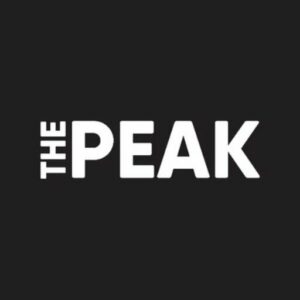By Alison Roach
SFU Surrey-based project will evaluate the effects of age
Beginning in April, the SFU Surrey campus has become home to an extensive study focused on the process of aging. The Canadian Longitudinal Study on Aging (CLSA), the largest of its kind, has set up collection sites at SFU, UBC, and UVIC, and plans to survey 50,000 individuals across Canada in the span of the next 20 years. Twenty thousand participants from across Canada will be followed by phone interview, while the remaining 30,000 participants are to take part in the project’s comprehensive cohort, which will involve being interviewed and evaluated on site. Fifteen-hundred of these individuals live within 25 kilometers of SFU Surrey, and will be evaluated at the new 1,100 square foot lab there. These participants will undergo complete physiological workups, and have data collected on everything from their nutritional habits to their socio-economic status. The aim of the study is to look at how these aging and health factors interact with each other.
The CLSA has received funding from various sources, the majority of which comes from the Canadian Institutes of Health Research. The CIHR has provided $25–30 million to put towards the actual data collection, to be used in the first five years of the study. SFU itself has received over $3 million towards the project. The Canadian Foundation for Innovation has provided all the funding for the data management sites, the repositories, and the equipment. Besides these two foundations, each province has some provincial organizations providing additional funding, with B.C.’s coming from the B.C. Knowledge Development Association.
Dr. Heather Stewart, a research associate in the Gerontology Research Centre at SFU, is the regional manager for the CLSA. She explained: “We’re going to capture data on human aging more or less over the life course that will tell us about biological, physical, and social functioning. We can look to see how these forces interact with each other, for example how someone’s social support, family situation, or work situation may impact their physical function or their risk for getting disease.” Participants of the in-person portion of the study will be evaluated for a large array of variables, such as height, weight, balance, gait, vision, and hearing, in addition to their social and economic situations.
The scale of the survey, the large age range, and the wide time frame all contribute to produce a unique opportunity for insight into the process of aging. Dr. Andrew Wister, chair of SFU’s department of gerontology, is the leader of the study at SFU and said that to gather the kind of information they’re going to be looking for, “You have to have all the measures in one survey, and you have to follow people over time.” Wister was brought into the study for his tremendous expertise and knowledge in the field, and has worked on the development of the study since its inception 12 years ago. Wister cited the baby boomers as a particular personal research interest, and considered understanding the health trajectories of these people extremely important.
Wister also emphasized the interrelatedness of the study. “[The CLSA] is connecting lifestyles to all different aspect of social and emotional life. I think what can come out of this is not only understanding of the causes of health and illness . . . but to be able to articulate and elaborate the way in which these patterns will influence our healthcare system, so that we can make changes,” he said. This project builds on the understanding that all these factors work together in complicated ways to influence the development and trajectory of illness.
The hope is that the enormous amounts of information that will be gathered will yield some insight into possible improvements to our health care system.
“I hope we’ll uncover or discover new information that will have a significant impact on either delivery of health services or reduction of incidents of chronic disease, things that really take a toll on society and really inflate the cost of health care in our country,” said Stewart.










































